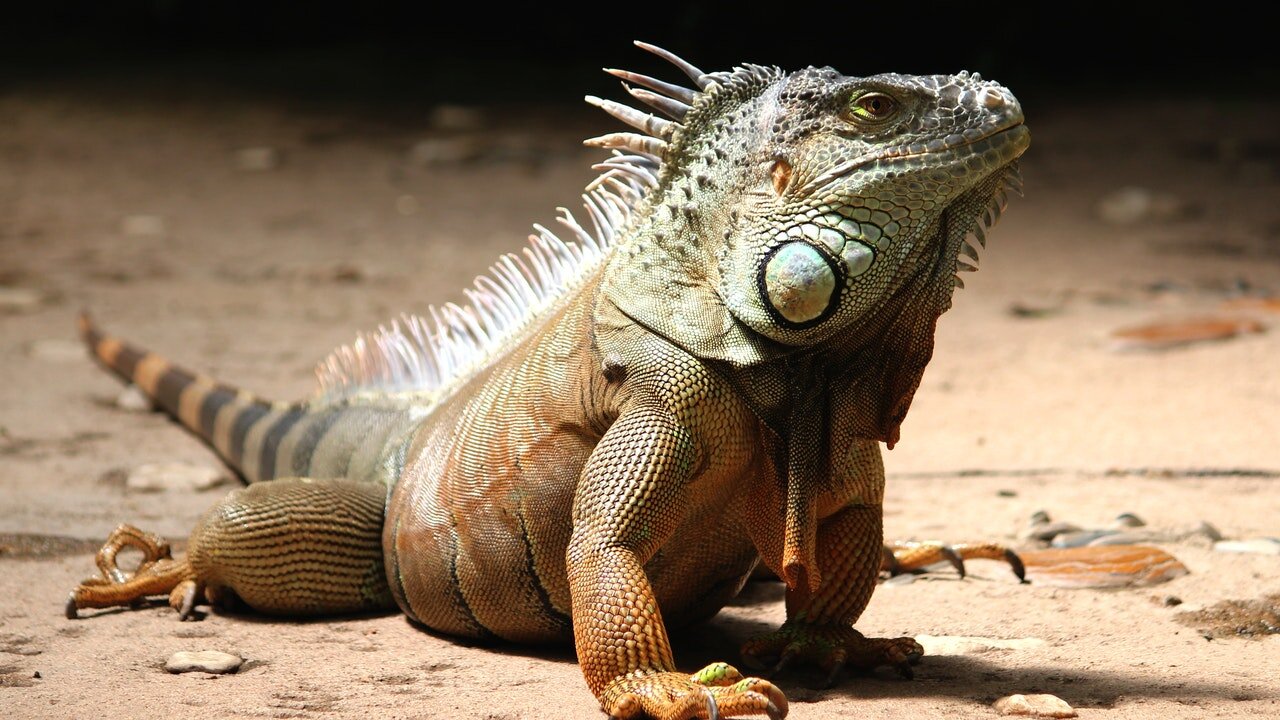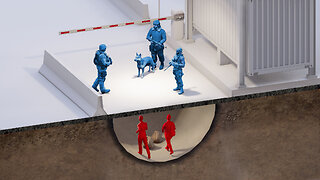Premium Only Content

Lizards - scenic relaxation film with calming music
Lizards - scenic relaxation film with calming music
The lizards or lizards are a suborder of reptiles that follow the group of squamous lizards of the phylum Chordata, and they are reptiles closely related to snakes. Some of them, like snakes, have no legs, while some of them resemble snakes to some extent, but they have legs. As for large lizards, they are more similar to crocodiles.
Physiology
the movement
Sticky pads allow geckos to climb vertically.
Apart from legless lizards, most lizards are four-legged and move using a gait with alternating movement of the left and right limbs with a large body flexion. Flexion of the body prevents this large breathing during movement, limiting its endurance, in a mechanism called a carrier constraint. Many species can run on two legs, [10] and a few can support themselves on their hind limbs and tail while they are stationary. Many species as small as those in the genus Draco can glide: some can reach 60 meters (200 ft), and lose 10 meters (33 ft) in height. [11] Some species, such as geckos and chameleons, adhere to vertical surfaces including glass and ceilings. [9] Some species, such as the common basilisk, can run through the water. [12]
senses
More information: Sense
Like other vertebrates, lizards benefit from the senses of sight, touch, smell, and hearing. The balance of these species varies with the habitat of the different species; For example, geraniums that live largely covered in loose soil rely heavily on smell and touch, while geckos rely largely on sharp vision for their hunting ability and assessment of their distance from their prey before striking. Monitor lizards are distinguished by vision, hearing, and olfactory senses. Some lizards make unusual use of their sensory organs: chameleons can direct their eyes in different directions, sometimes providing non-overlapping fields of view, such as forward and backward simultaneously. Lizards lack external ears, and have a circular opening through which the tympanic membrane (eardrum) can be seen. Many species rely on hearing for early warning of predators, fleeing at the slightest sound. [13]
The Nile monitor uses its tongue to smell
As in snakes and many mammals, all lizards possess a specialized olfactory system, the vomeronasal organ, used to detect pheromones. Monitor lizards transmit smell from the tip of their tongue to the organ; The tongue is used only for this information gathering purpose, and is not involved in food manipulation. [14] [13]
Skeleton of a bearded dragon (Pogona sp.) on display at the Museum of Osteology.
Some lizards, especially iguanas, have retained a photosensitive organ on top of their heads called the parietal eye, a basal ("primitive") feature also found in the tuatara. This "eye" has only a retina and a rudimentary lens and cannot form images, but is sensitive to changes in light and darkness and can detect movement. This helps them detect predators that are pursuing them from above. [15th]
poison
Some lizards, including the gila monster, are poisonous.
Further information: Evolution of snake venom
Until 2006, the Gila monster and the Mexican beaded lizard were believed to be the only venomous lizards. However, many species of monitor lizards, including the Komodo dragon, produce potent venom in their oral glands. For example, blood monitor poison causes rapid loss of consciousness and extensive bleeding through its pharmacological effects, lowering blood pressure and preventing blood clots. Nine classes of known poisons from snakes are produced by lizards. The scope of the procedures offers potential for new medicinal drugs based on orchid venom proteins. [16] [17]
Toxin-related genes have been found in the salivary glands of a wide variety of lizards, including species traditionally thought to be non-venomous, such as the iguana and the bearded dragon. This indicates that these genes evolved in the common ancestor of lizards and snakes, about 200 million years ago (forming a single clade, Toxicofera). [16] However, most of the putative venom genes were 'housekeeping genes' found in all cells and tissues, including the skin and cloacal glands. Thus, the genes involved may be the evolutionary precursors to the venom genes. [18]
breathing
Recent studies (2013 and 2014) on the lung anatomy of the savannah and green iguana monitor have found that they have a unidirectional airflow system, which involves air moving in a loop through the lungs when breathing. It was previously believed that this was only found in archosaurs (crocodilians and birds). This may be evidence that unidirectional airflow is an inherited trait in diploids. [19] [20]
Reproduction and life cycle
Trachylepis maculilabris skinks mating
As with all amniotes, lizards rely on internal fertilization and copulation involves the male inserting one half of his half into the female's cloaca. [21] The majority of species blanch (blanching). The female deposits the eggs in a protective structure such as a nest, crevice, or simply on the ground. [22] Depending on the species, clutch size can vary from 4-5 percent of a female's body weight to 40-50 percent and clutches range from one or a few large eggs to dozens of small eggs. [23]
Two images of eastern fence lizard eggs applied to one image.
In most lizards, the eggs have leathery shells to allow water exchange, although more arid species have calcified shells to retain water. Inside the eggs, embryos use the nutrients from the yolk. Parental care is uncommon and the female usually abandons the eggs after laying. Hatching and protection of eggs occurs in some species. Female prairie squirrels use respiratory water loss to keep the eggs moist, facilitating embryonic development. In lace monitors, the young hatch for approximately 300 days, and the female returns to help them escape the termite mound where the eggs are laid. [22]
About 20 percent of lizard species reproduce by life (live birth). This is especially common in Anguimorphs. The natal species give birth to relatively advanced young that look like
#animals
#Lizard
#Lizards
Please subscribe to the channel to see more of the animal world
-
 14:09
14:09
Zoufry
2 days agoThe Cartel's Genius Border Smuggling Tricks
16.9K7 -
 2:00:26
2:00:26
MG Show
19 hours agoPresident Trump Making BIG Deals in UK & EU; Structure Change
48.2K21 -
 23:09
23:09
GritsGG
16 hours agoQuad Domination w/ Bobby Poff!
47.9K2 -
 2:03:21
2:03:21
Side Scrollers Podcast
20 hours agoTea App Doxxing DISASTER, “PROBLAMATIC” Sydney Sweeny, INSANE Online “Safety” Act | Side Scrollers
17.8K10 -
 LIVE
LIVE
Lofi Girl
2 years agoSynthwave Radio 🌌 - beats to chill/game to
336 watching -
 1:32:48
1:32:48
Omar Elattar
8 months agoAndy Elliott: "Quit Your Excuses Now!" How to 10x Your Income In 12 Months!
14.9K5 -
 2:02:10
2:02:10
Inverted World Live
11 hours agoGhislaine Maxwell Gives 100 Names to DOJ | Ep. 81
290K33 -
 2:51:11
2:51:11
TimcastIRL
11 hours agoBREAKING: MASS SHOOTING ERUPTS In NYC, Police Officer SHOT, FBI On Scene | Timcast IRL
289K147 -
 14:43:03
14:43:03
ZWOGs
18 hours ago🔴LIVE IN 1440p! - EFT w/ crgoodw1n, Kingdom Come Deliverance, Splitgate 2, & More! - Come Hang Out!
69.2K4 -
 30:09
30:09
Afshin Rattansi's Going Underground
1 day agoCurtis Yarvin: ‘Trump 47 is 10x More Powerful than Trump 45’ & the TOXIC US-Israel Relationship
48.7K38